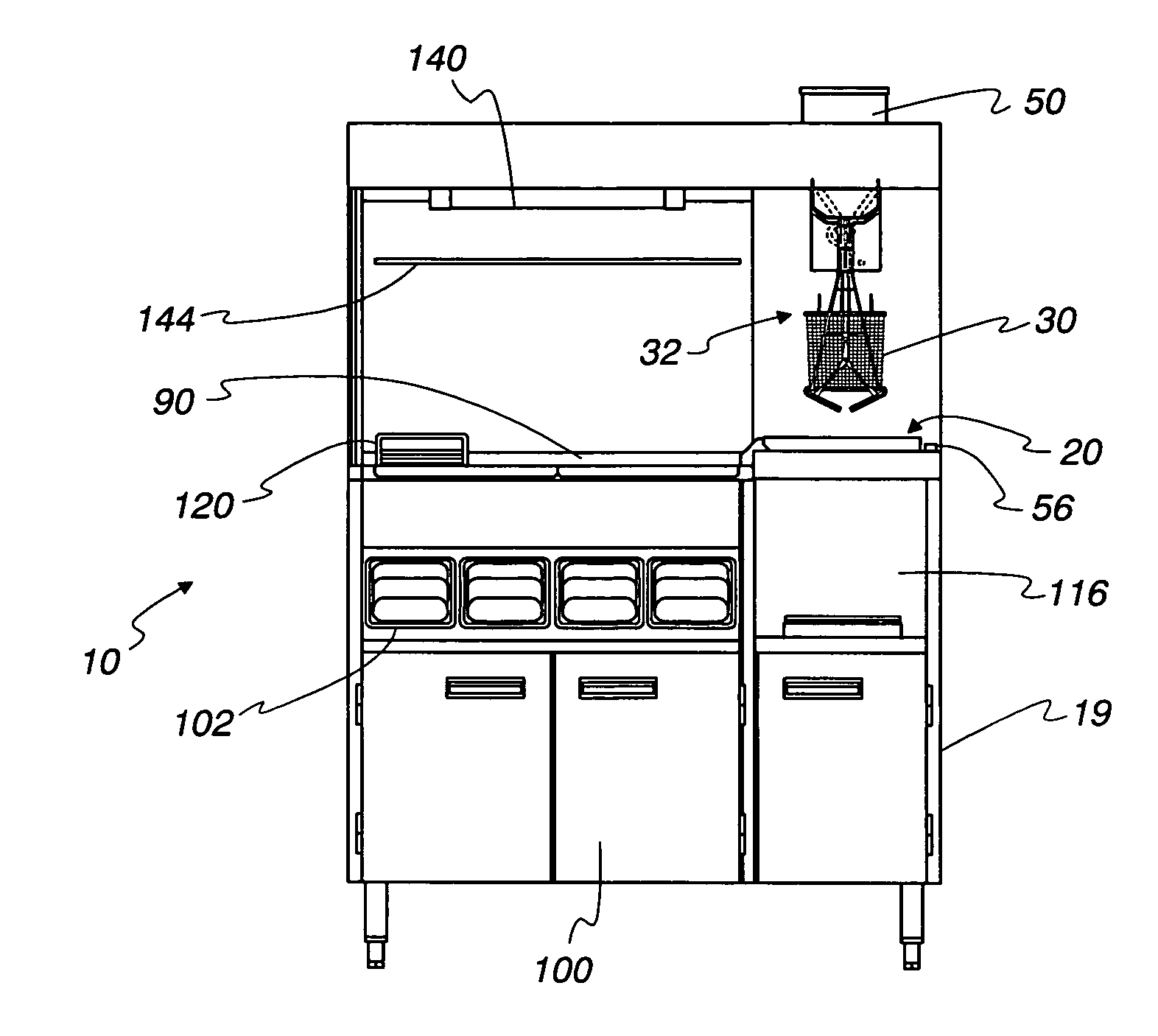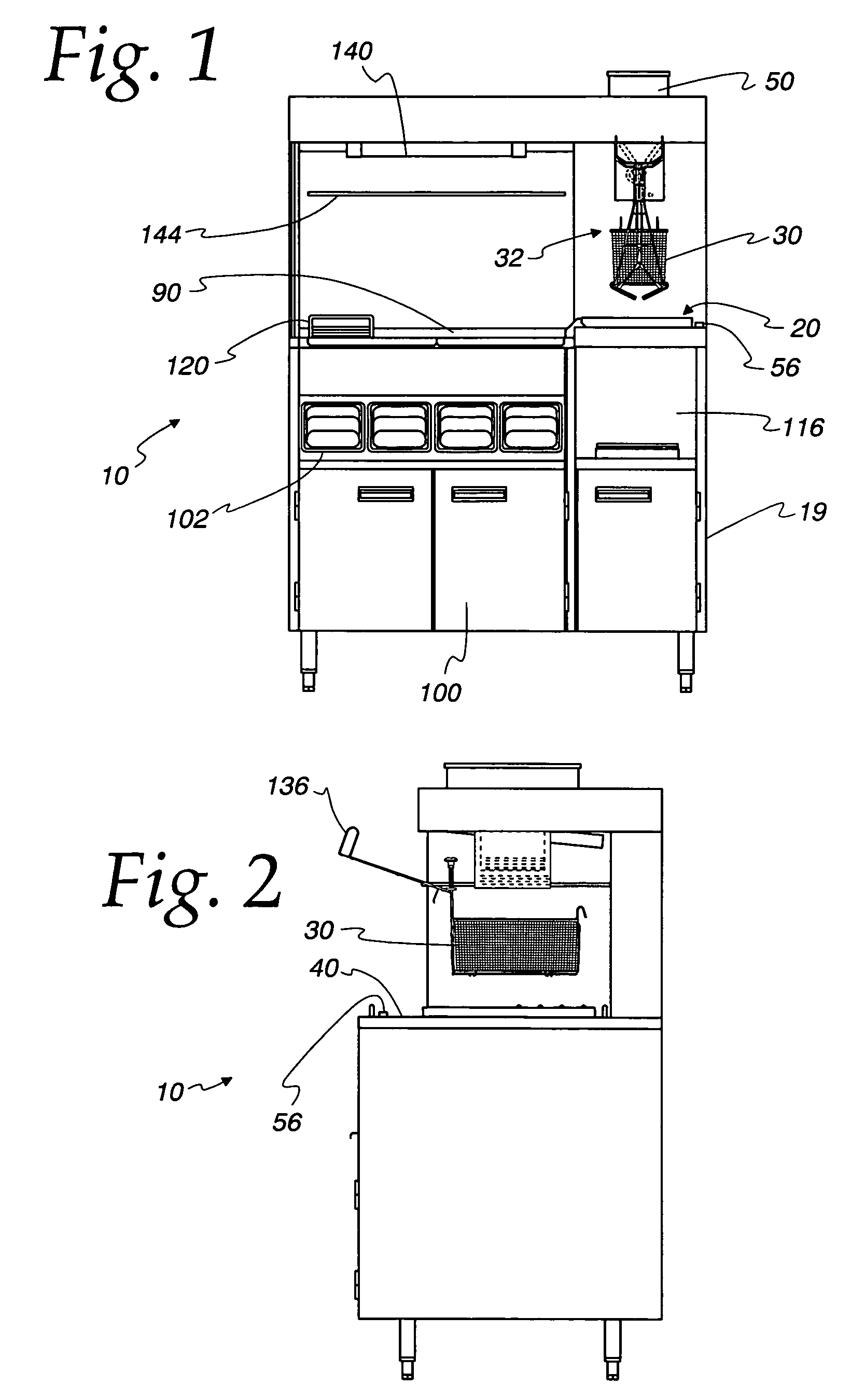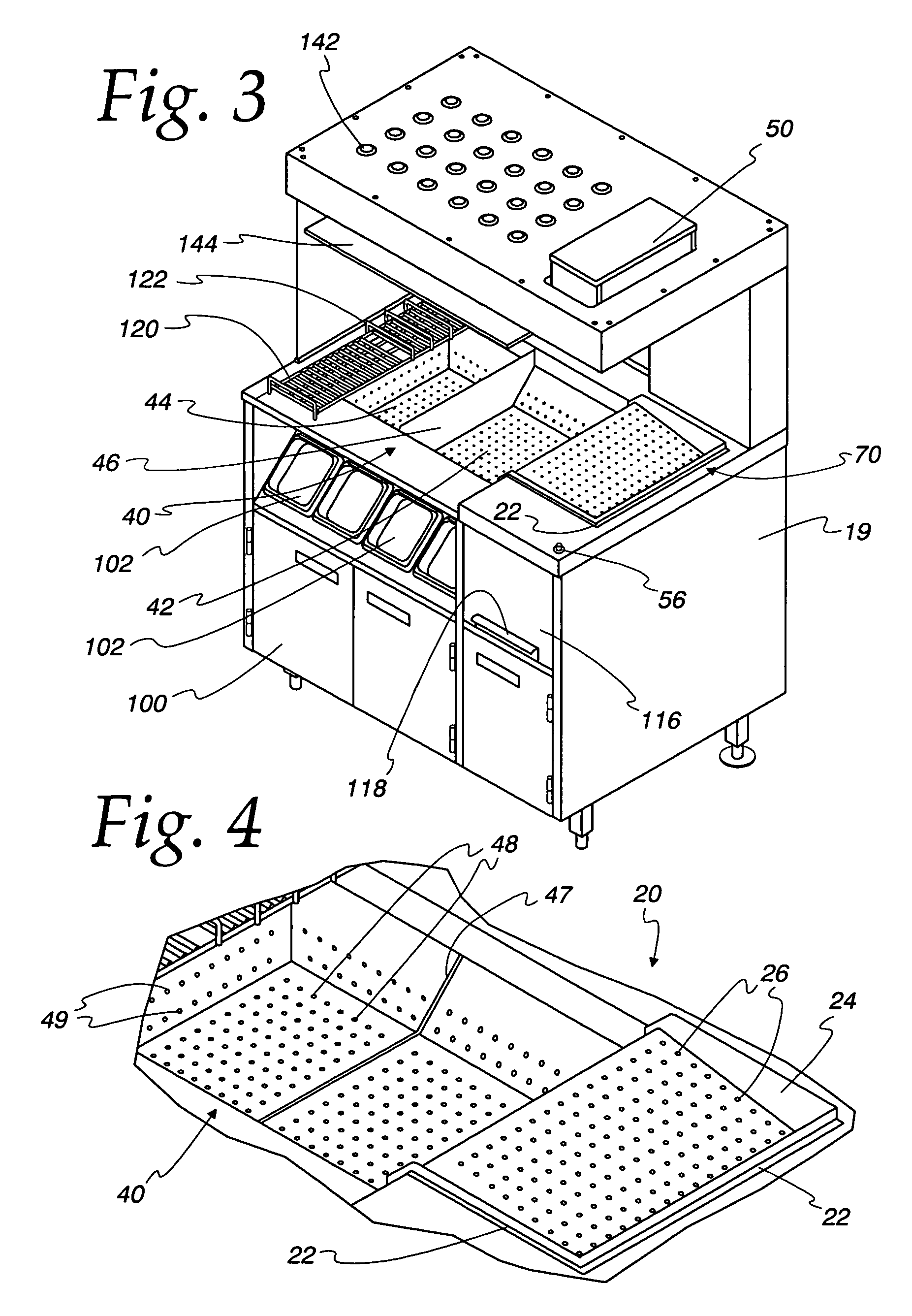Storage and packaging of bulk food items and method
a food item and bulk technology, applied in the field of automatic food processing, storage and distribution of food items, can solve the problems of customer delay and/or stale, unusable food, waste of food, etc., and achieve the effect of improving seasoning adhesion, reducing waste, and reducing was
- Summary
- Abstract
- Description
- Claims
- Application Information
AI Technical Summary
Benefits of technology
Problems solved by technology
Method used
Image
Examples
Embodiment Construction
[0038] In accordance with the present invention, an automated food processing system and method are described. The automated food processing system and method in accordance with the invention allow food to be processed and transferred to a food holding or storage area for subsequent processing by a human operator and packaging in a suitable container.
[0039] Referring to the figures generally and in particular to FIGS. 1 through 3, there are illustrated an elevational front view, side view and perspective view of an automated processing station and system 10 in accordance with the invention. Automated food processing system 10 includes a food processing or preparation station comprising a food receiving tray 20 that receives cooked food items from, for example, a fry vat that deep fries food items, either in bulk, e.g. French fries, or individually, e.g., fish fillets. The fry vat may be conventional, and the fry baskets used to cook the food in the fry vat may also be conventional....
PUM
 Login to View More
Login to View More Abstract
Description
Claims
Application Information
 Login to View More
Login to View More - R&D
- Intellectual Property
- Life Sciences
- Materials
- Tech Scout
- Unparalleled Data Quality
- Higher Quality Content
- 60% Fewer Hallucinations
Browse by: Latest US Patents, China's latest patents, Technical Efficacy Thesaurus, Application Domain, Technology Topic, Popular Technical Reports.
© 2025 PatSnap. All rights reserved.Legal|Privacy policy|Modern Slavery Act Transparency Statement|Sitemap|About US| Contact US: help@patsnap.com



